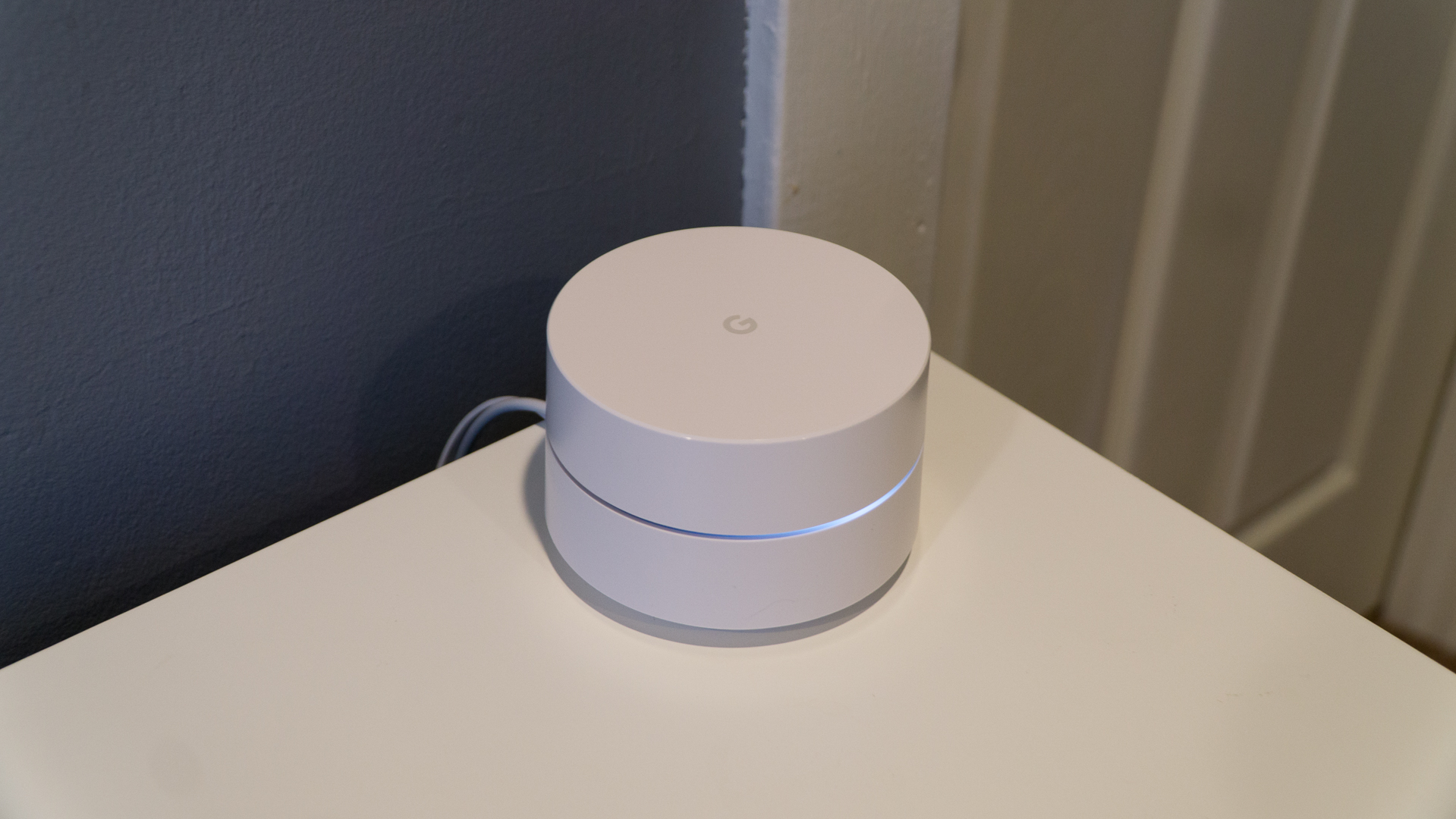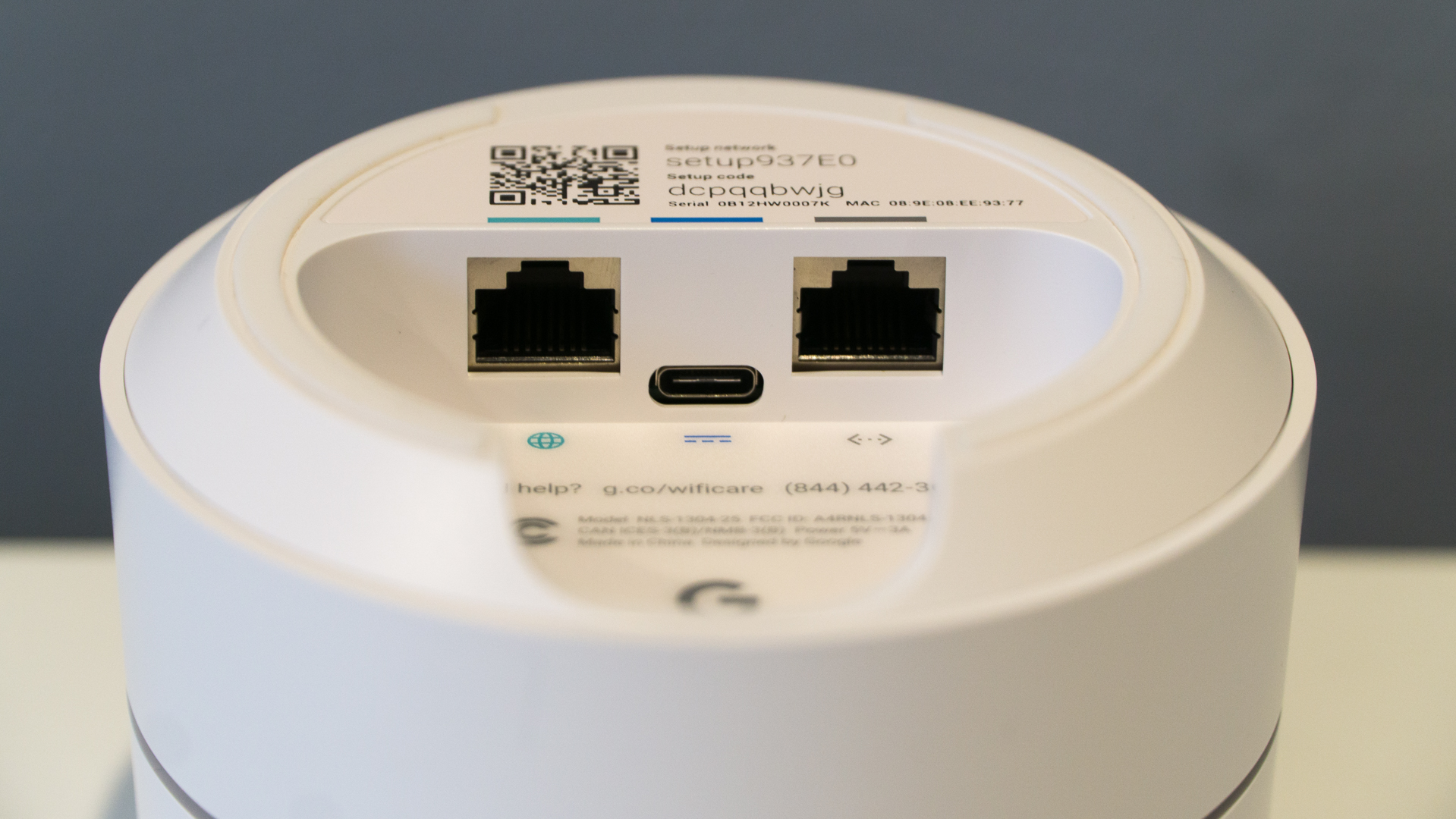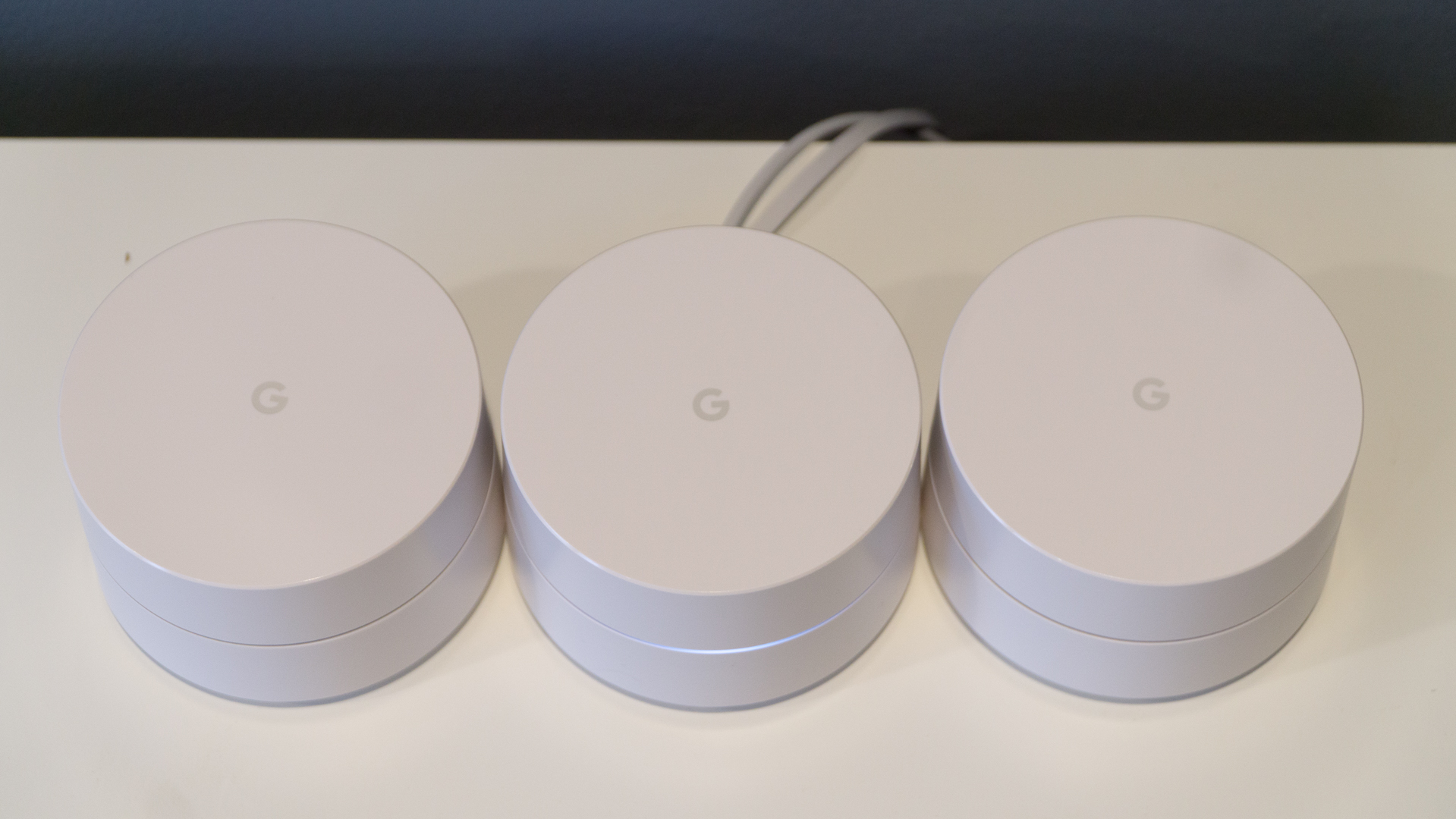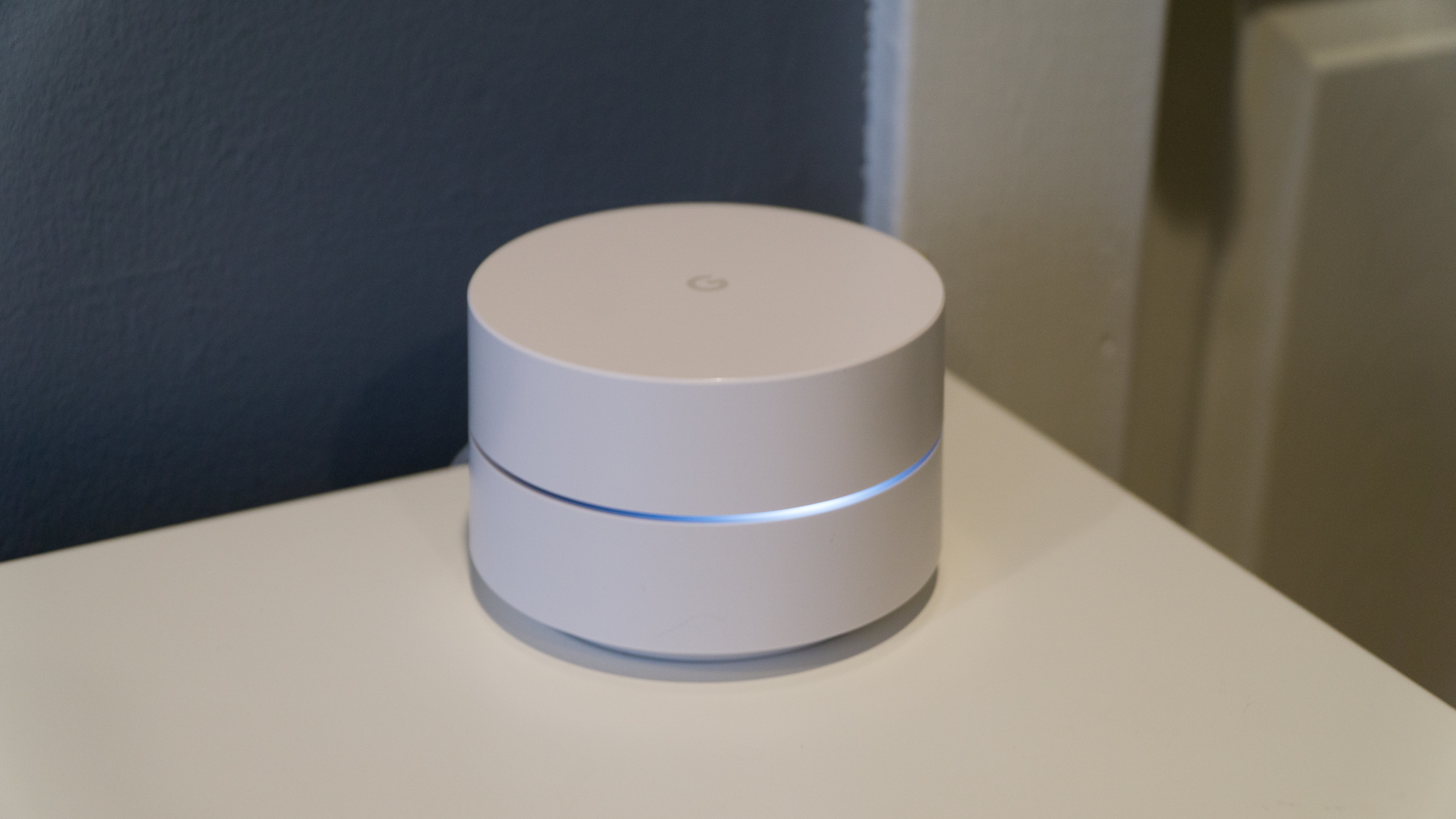Google Wifi
As devices like Netgear Orbi and Eero have shown: the age of routers and range extenders has ended. The future is tri-band or Wi-Fi mesh systems. And, surprising no one, the smart-home obsessed Google is all over it with the eponymous Google Wifi
And, it turns out that Google may have very well crafted the best Wi-Fi mesh system yet. Google’s managed to create a system that offers more mesh units than competitors at a lower price, and a focus on simple setup and management. The result? We never want to look at another router again.
Price and availability
Unsurprisingly, Google doesn’t ask for a lot of money for what’s on offer. Google Wifi costs $279 (about £197, AU$360) for a set of three units – that’s one primary ‘WiFi Point’ (the one you hook up to the modem or gateway) and two secondary WiFi Points.
In the UK, Google Wifi comes with a two unit set costing £229.
A single Google Wifi unit can be had for $119 (around £84, AU$153). Google promises that three Wifi Points can cover up to 4,500 square feet (418 square meters) in a home.
Unfortunately, at the time of writing, Google has made no mentions of pricing or availability in Australia. However, when we spoke to Google just before the UK launch, it suggested that it was looking to release Google Wifi globally in the future.
Google offers more units for less money than any competitor, like the Netgear Orbi, with all others costing at least $400 (about £320, AU$520) for the same amount.

Design and setup
Not only does Google have the clear advantage of pricing on its hands, but it also has the best-designed individual units and easiest setup of any offering. Each Google Wifi unit, a tiny, unassuming cylinder with a simple white LED band in its center, is capable of the same functionality.
This means that any of the three units could function as the “router” of the system, while the others can bestow wired internet (which is beamed to the unit wirelessly) with their included Ethernet ports as well as wireless internet. All three units are powered via USB-C.
Setup is as sublime as Google’s hardware design, using a free iOS and Android app to facilitate the process. While we won’t belabor you with the entire procedure, but the app configures your Wi-Fi network by first scanning the QR code on the Wifi Points connected to your modem or gateway and power.
From there, the app tells you to name your network and set a password, then pair the additional Wifi Points and label them in the app for reference. Again, it takes seconds for the “router” to recognize the Wifi Points and for them to begin broadcasting.
But, you’re not going to get the same depth of access as even Netgear Orbi provides, so no band switching for you. However, Google Wifi handles this in the background automatically.

However, the app offers plenty more useful features, like constant monitoring of your network, its Points and the devices connected to it. The app has an included internet speed test similar to that of Ookla’s, a mesh test that measures the health of your Points’ connections as well as a Wi-Fi test that measures your connection strength from within the network.
You can also prioritize bandwidth to one device for a time, control smart home devices and pause internet access to certain devices in a family setting – all from within this app.
By far, this is the most complete and elegant suite of control settings we’ve seen from a Wi-Fi mesh system so far, despite its lack of dropdown boxes and toggles.

Performance
We’ve seen just as impressive, if not better, performance from the Google Wifi system as we have Netgear Orbi. Google Wifi draws the absolute most from our 100Mbps Wi-Fi service that we’ve seen any router able to, but can do so from every room of our, albeit small, house.
We’ve been able to stream 4K video through Netflix to our Roku Premiere in the basement as well as we’ve been able to play Overwatch in the office where the modem is located: without issue. Wi-Fi mesh systems like Google Wifi aren’t focused so much about throughput as they are coverage, but this product delivers regardless.
The traffic prioritization feature can ensure that your gaming session is getting more of that crucial bandwidth than the other devices in your house that are Facebooking and streaming HD video.
Plus, the network can automatically repair itself should one or more of the Wifi Points be accidentally unplugged or otherwise lose power.
While we know that Google Wifi operates its mesh system over existing Wi-Fi bands (2.4GHz and 5GHz) over the 802.11s mesh protocol rather than Netgear Orbi’s tri-band system that communicates over a second 5GHz Wi-Fi band, we haven’t found a terrible difference between either’s performance. We do see slightly faster download speeds in MB/s on the 2.4GHz band from the Orbi over the Google Wifi, but that could also be an anomaly.

The true benefit of Google Wifi over others is, simply put, its coverage for the price. You can get equal amounts of coverage in pure square footage from competing systems with fewer units, but the versatility having more units gives you in terms of shoring up dead spots can’t be ignored.
We liked
Google Wifi is incredibly easy to setup and manage on a day-to-day basis despite its lack of some finer control. The fact that the system includes three units for less than some competitors charge for two or fewer is also a huge benefit. Finally, these units look even better in terms of design than systems like Netgear Orbi, and are much easier to hide in plain sight.
We disliked
While there isn’t much to gripe about regarding Google Wifi, some might like finer control over Wi-Fi settings, like controlling which bands are broadcast and when. Also, as it uses AC1200 technology, Google Wifi isn’t capable of the AC3000 or even AC2200 throughput that Netgear Orbi and Linksys Velop are, respectively, which might turn off those paying big for super-fast internet speeds.

Final verdict
Google Wifi is the easiest router that we’ve ever set up, period. And, that’s considering the two extra devices required to complete it. For a relatively affordable price, Google offers more units than most competitors and the best setup and management app by far.
For all of the finer hardware controls it lacks, Google considered every toggle and test it could present in an easily understandable way through its app. (There’s even bandwidth priority control.) Couple that with a hardware design that’s easier to hide in plain sight than any we’ve seen yet, and you’re looking one of the best Wi-Fi systems that money can buy today.
First reviewed April 2017.
0 comments:
Post a Comment